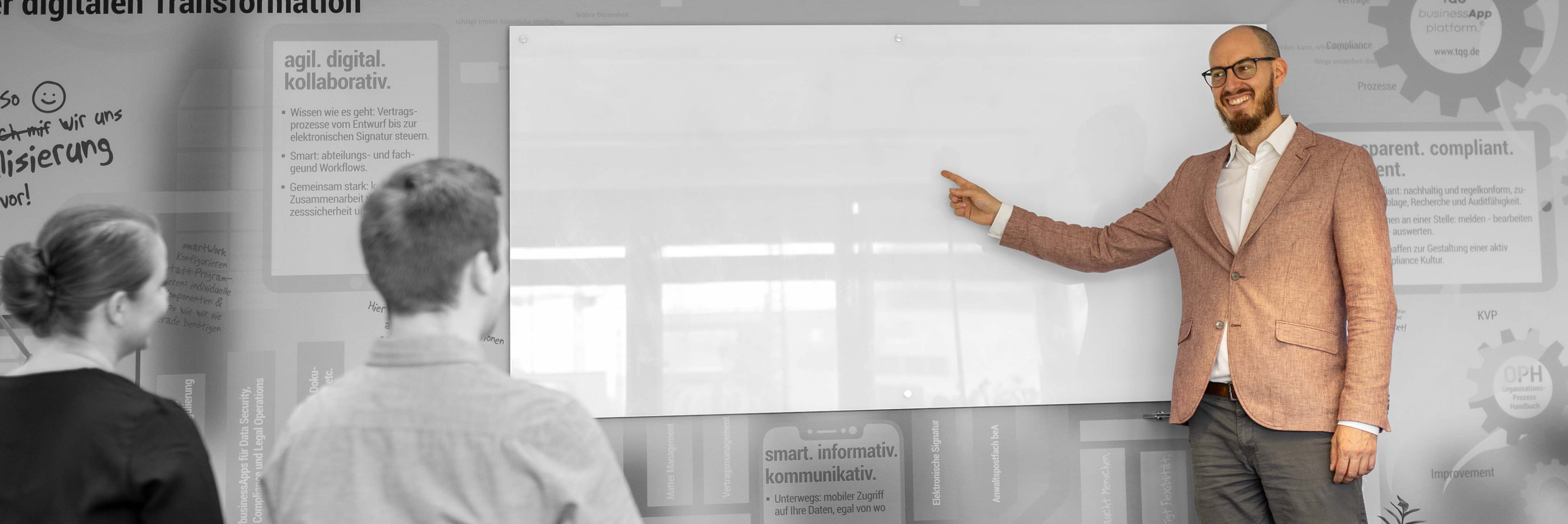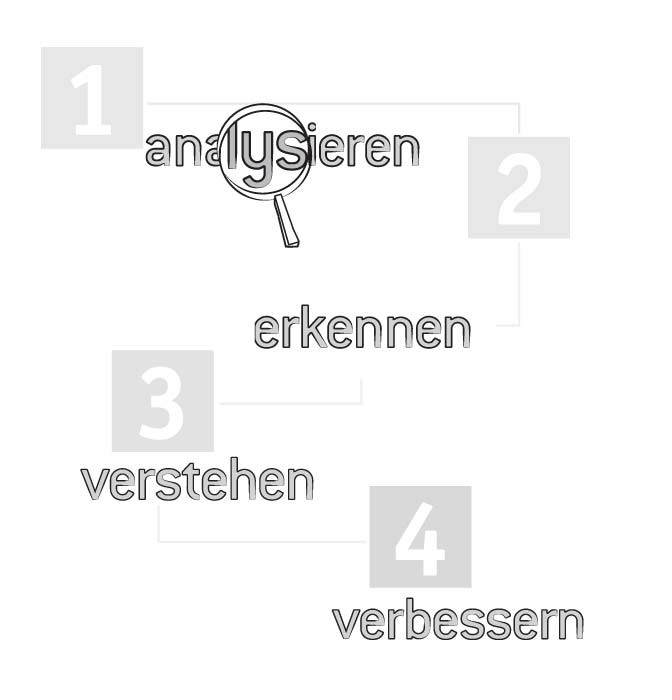Organization and Process Handbook (OPH)
The Organization and Process Handbook (OPH) is a consulting and process method for the analysis and description of administrative organizational processes and individual rules. The guide is based on the many years of experience gained by TQG experts and is intended to highlight the potential opportunities and possible improvements within an organization. The objectives of the OPH are to ensure that the company gains strategic orientation in organizational processes and, through that, enjoys sustainable business success.
To achieve this, the interdepartmental processes of the customer are documented transparently and securely. By standardising the corporate processes and promoting individual success-generating procedures, with the help of the TQG businessApp cloud platform and by benefiting from staff members’ experience, the strategic objectives can be realised by means of global Contract Management.
The handbook details the approach and how to proceed with the results of discussions and cooperation with the customer's employees. It is used to determine potential internal opportunities and develop concrete proposals for the improvement and implementation of those opportunities. An OPH is not a list of specifications, but rather a guide for implementing a project under the motto of “Transparency - Compliance – Synergies”, for sustainable and secure contract and information management and the desire to continually improve during the transformation of an agile organization.
Experiences & Quotes

"…the analysis of our corporate culture opened up our employees to our aims and thinking about potential!"
Project manager of a consulting project



"One has to analyze the past and accept the present in order to successfully shape the future."
A wise saying

Potentials
- Motivation of employees through transparency and integration in the CIP – actively promoting the Continuous Improvement Process
- 100% description of company processes related to document security and storage
- >30% detection of potential opportunities for process optimisation within the organization
- Measurably transparent processes through clear documentation (InTime, InQuality)
- 100% document security for the risk assessment of corporate decisions
This provides you with a decision template for:
- measurable project and milestone planning - InTime
- predictable and defined project costs (proposal for a fixed price) - InBudget
- agile structure changes in the corporate organization – InQuality
4 Phase model
The proven OPH method consists of four phases:
| Capture* | Capture, evaluate and determine your current situation through interviews and checklists with the departments |
| Discover* | Identify, develop and define requirements, suggestions and best practice approaches in workshops with the departments, including IT concepts |
| Improve | Document and describe requirements, evaluations, proposals and implementation scenarios in the Organization and Process Handbook, with integration concepts, project proposals with the project scope, IT integration |
| Score | The presentation and recommendation of management arguments for sustainable decisions in respect of realising the potential opportunities from and with the departments, including a cost/benefit analysis |
* These phases are structured so that the departments can use checklists and questionnaires in advance to describe their requirements and coordinate internally, so that in the interviews or workshops, the representatives from the departments (max. four employees) can facilitate the exchange of information. This proven approach is part of the efficient time management described by the OPH phase plan.

Organisation Performance Quotient (OPQ)
The Organisation Performance Quotient (OPQ) is an objective, universal and overarching value for the measuring of quality and compliance in organizational areas and administrative processes by drilling down through global organizational tasks (for example, contract management, risk and compliance management, BPM and others). It is a central element of the "Capture" phase within the OPH phase model as it gives valuable suggestions, discussions and information on the organization and the motivation of employees.
